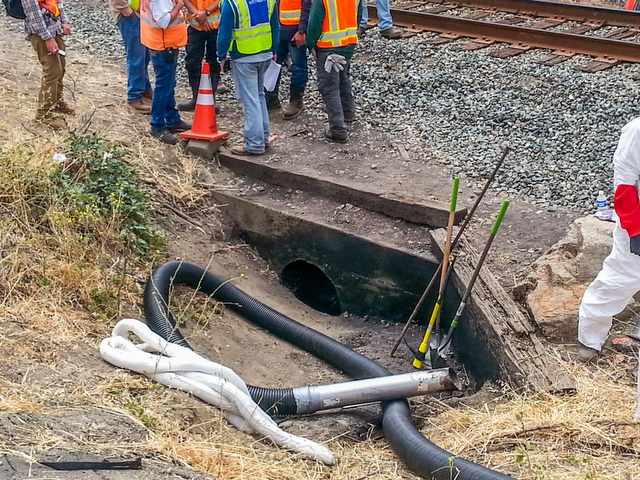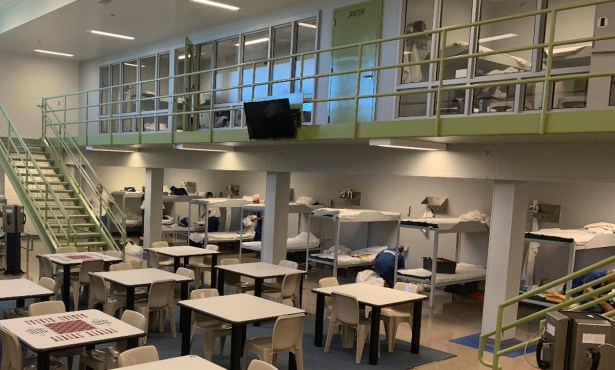Refugio Oil Spill Trial Suggests Warning Signs Hid in Plains’ Sight
Plains Technicians Describe Actions on Day of Spill

The Plains All American Pipeline Company’s criminal trial — in which it faces 15 charges of criminal negligence related to the 2015 Refugio Oil Spill — took an acerbic turn last week when defense Attorney Gary Lincenberg asked a witness why she’d winked at county prosecutor Kevin Weichbrod on her way out of the courtroom. The witness was Elsa Arndt, who was a senior planner with the county’s Office of Emergency Management (OEM) on the day of the oil spill. Her testimony previously suggested Plains’ response to the spill was delayed and its earlier spill drills somewhat half-baked.
Judge James Herman quickly dismissed Lincenberg’s question as incredibly inappropriate, but Lincenberg seemed determined to question Arndt’s reliability as a witness. Later, Lincenberg also pointed out — in the absence of jurors — that Arndt wasn’t following OEM’s emergency plan to a T, a shortcoming that hurt her credibility. Prosecutor Weichbrod had a simple rebuttal: OEM is not on trial.
Meanwhile, the prosecution has laid out a series of warning signs Plains seemed to dismiss on the morning of the spill — red flags before anyone saw oil in the ocean. That means jurors have also gotten a comprehensive lesson in Plains’ oil operations, from the desk arrangement of the control room in Midland, Texas, to the particulars of the pumps and valves in the Santa Maria region. Although that background tended to elicit a few pairs of droopy eyelids, the pre-spill timeline has gotten progressively more interesting.
On the morning of May 19, 2015, the day of the Refugio Oil Spill, Plains electrician Charles “Skip” Hammond was tending to Plains’ Sisquoc pump station — which fed oil into the pipeline that ruptured, Line 901. As of 11:15 that morning, one of the pumps there had overheated and kicked itself offline automatically. Hammond testified that he and Mike Buttram, Plains’ mechanic, argued over the phone about the hot-to-the-touch pump. According to Hammond, Buttram recognized oil was obviously not flowing into the pump, causing it to overheat — oil absorbs a pump’s heat — and insisted that a valve must be closed somewhere. Hammond, who was able to see indicators for each valve, countered that all valves were open.
At the time, James Vaughn, who arrived to the courtroom in pinstripes and cowboy boots and testified in a thick Texan accent, was controlling Line 901 from Midland. He received alarms of fluctuating pressures and flow rates in the line, but given that there was maintenance work on the line that day, he figured conditions would stabilize. In hindsight — a perspective that defense lawyer Lincenberg objected to him using — the bouncing numbers were a result of the control valve fighting against the oil spilling out of Line 901’s rupture, he said. Those alarms took place around 11 a.m., hours before Buttram would confirm that Plains’ oil was flowing into the ocean.
Buttram was affable as a witness, a quality most apparent as he explained the details of a pipeline inspection spreadsheet. When Weichbrod asked Buttram what a “geometric magnetic anomaly” was, Buttram told him, “It’s a dent,” and the jury chuckled. In the galley, one of the witnesses’ attorneys sitting behind the Plains team whispered to his neighbor, “The jury likes him.”
Buttram got fewer chuckles from the jury when Weichbrod’s questioning teased apart his reasoning the day of the spill. Despite being clued in about the earlier pump trouble, when Buttram heard word of oil in the ocean around one o’clock, he didn’t assume Line 901 was the source and didn’t tell anyone outside of Plains about the line’s strange behavior. Oil flowing from Line 901 to the ocean would have had to cross Highway 101, Buttram said, and he hadn’t seen any oil on the freeway. Weichbrod pointed out that Plains’ spill response plan, which Buttram had been trained on, specified Arroyo Quemado — the culvert that oil flowed through — as a major stream crossing underneath Highway 101.
Lincenberg’s response focused on the difference between hindsight and the information available the day of the spill. Because there was maintenance going on, he countered, it made sense that Vaughn, the pipeline controller, would have analyzed alarms and fluctuations differently than he would during ordinary operation. Controllers are not expected to shut down or isolate pipelines at every alarm, Vaughn testified.



